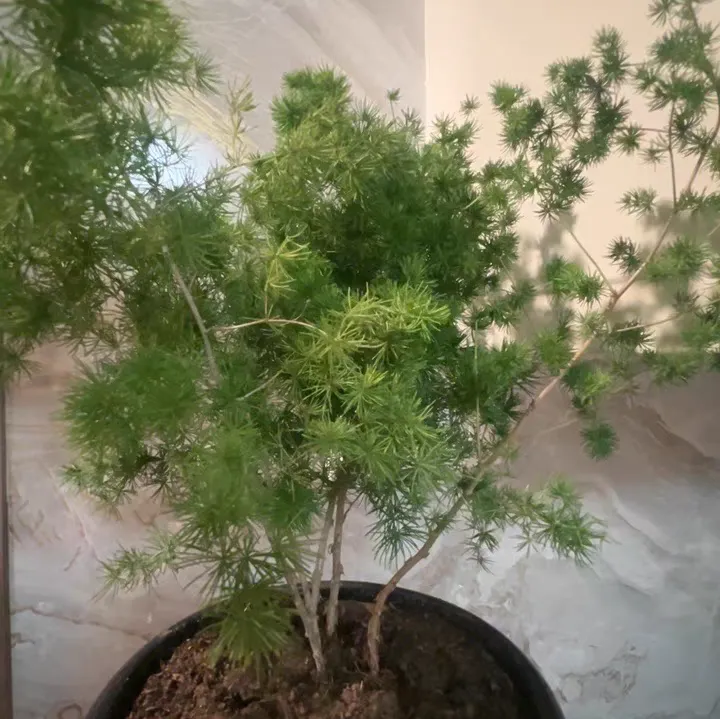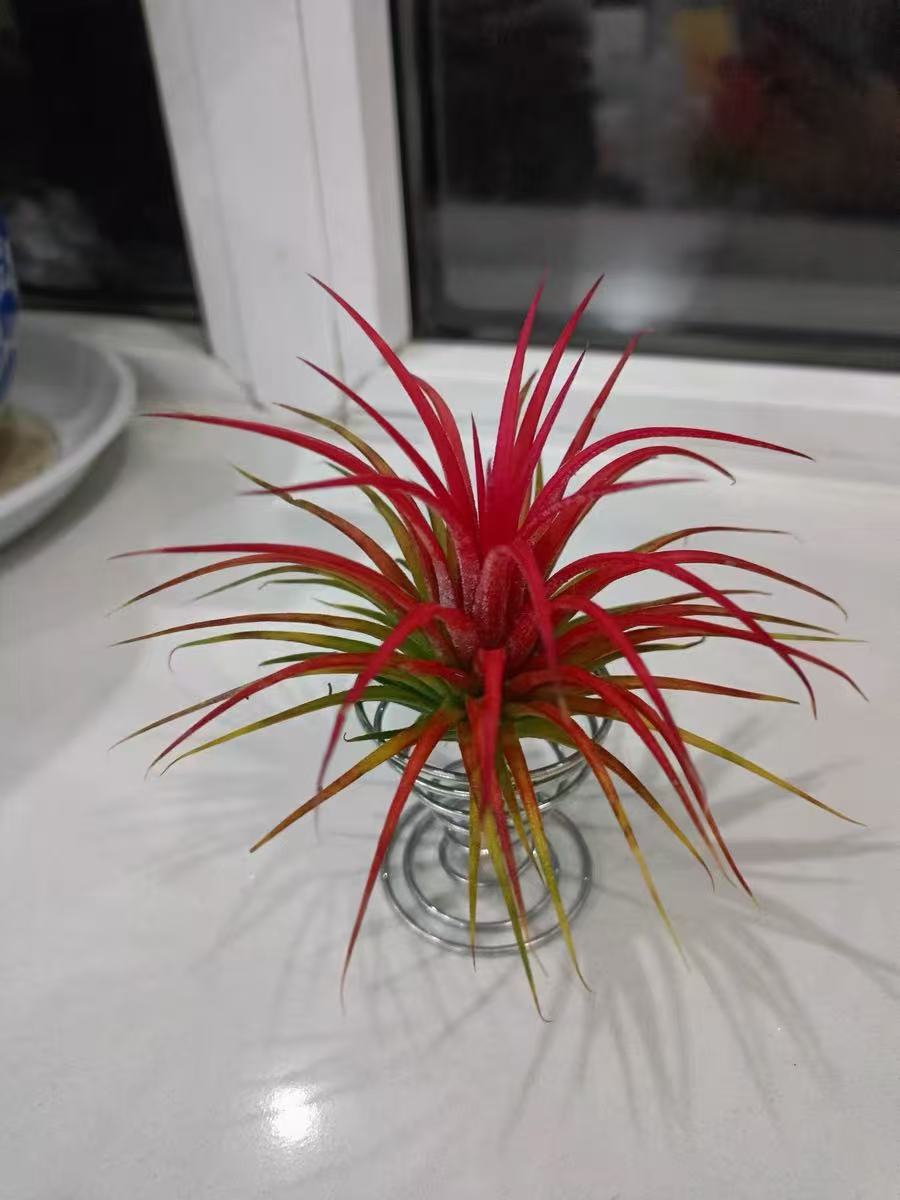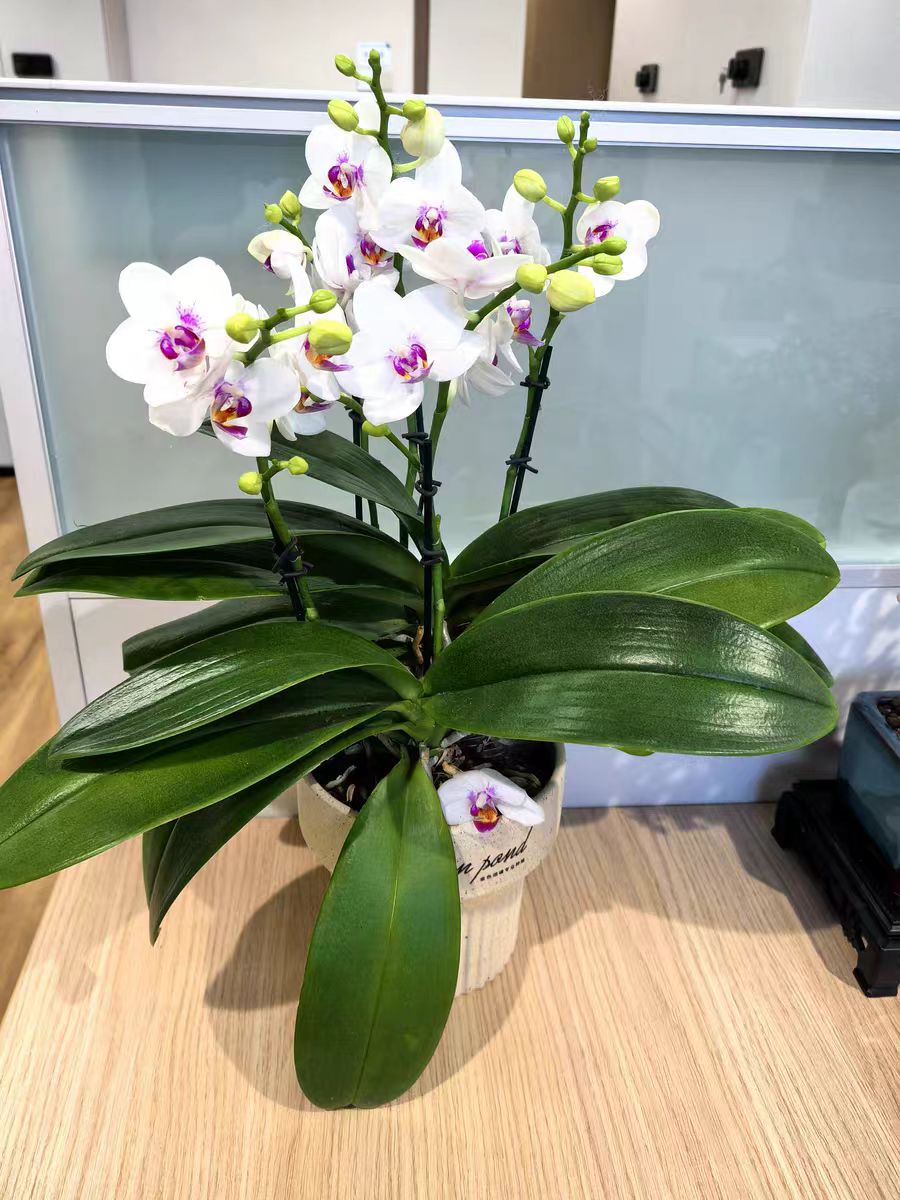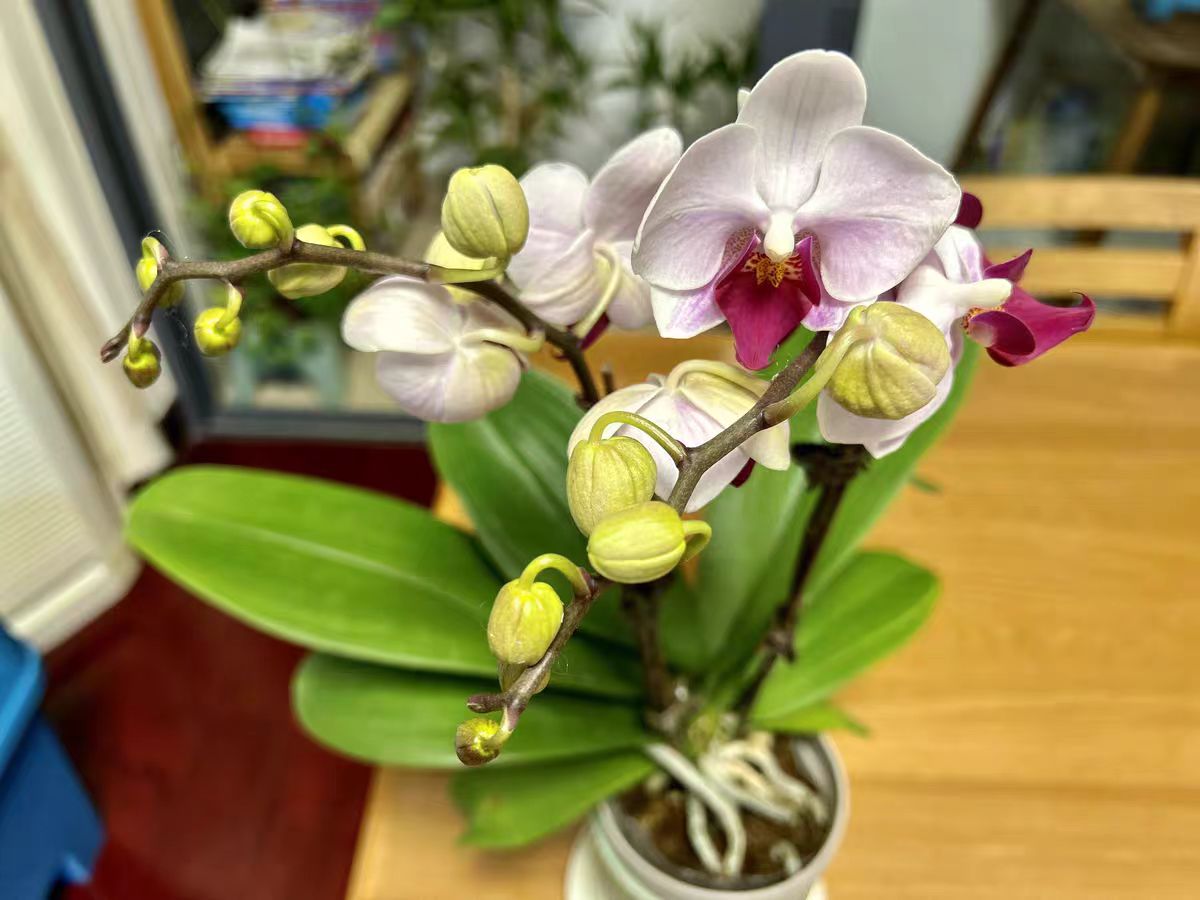Asparagus myriocladus, also known as Hydrangea Pine, Water Pine and so on, is a perennial shrubby herbaceous plant belonging to the genus Asparagus in the family Asparagaceae. Its plant height is usually between 30 and 150 centimeters. The stems are erect or slightly spreading and become woody in a shrubby form. The leaves are long and slender like needles, clustered together, with a bright green color. The new leaves are especially tender and lovely in light green, while the old leaves are dark green. The overall appearance is elegant and unique, possessing considerable ornamental value.
In the theory of feng shui, Asparagus myriocladus has a unique position and rich symbolic meanings. The word "Penglai" in its name makes people think of the legendary fairy mountain on the sea, so it is often regarded as a symbol of good fortune and prosperity. Placing Asparagus myriocladus in the living room at home implies that wealth will flow in and career will go smoothly. Its evergreen pine branches represent tenacious vitality and lasting endurance, and also symbolize the harmonious and stable family relationship, which can bring continuous vitality and energy to the family. If placed in the study, its elegant posture helps to create a quiet atmosphere, improve academic and career fortunes, and is believed to enhance people's concentration and thinking activity, helping them achieve academic and career success. Placing Asparagus myriocladus in the office can also relieve work pressure, promote harmonious interpersonal relationships and boost career fortunes.
Asparagus myriocladus is native to the Natal region of South Africa and has adapted to the warm, humid and semi-shady natural environment there, which also gives it special requirements for the maintenance environment. In terms of temperature, it grows best within the range of 20 to 30 degrees Celsius. When the temperature is high in summer, the intense sunlight can easily burn the leaves, so it is necessary to provide appropriate shade to cool it down. When the temperature drops below 5 degrees Celsius in winter, the plants may suffer from frost damage and need to be moved to a warm indoor place for protection.
Light conditions are equally crucial for the growth of Asparagus myriocladus. It can neither withstand long-term exposure to strong sunlight nor survive in an overly dark environment. The ideal light environment is bright, diffused light. For example, it can be placed near a window where the sunlight does not shine directly on it, ensuring that it can receive 3 to 5 hours of light every day to keep the leaves green and promote the healthy growth of the plant.
Asparagus myriocladus prefers a moist soil environment but is very sensitive to waterlogging. Watering should follow the principle of "watering thoroughly when the soil surface is dry". Generally speaking, it is more appropriate to water it once every 3 to 5 days, but the specific frequency needs to be adjusted flexibly according to the changes of seasons and weather. In summer, as the water evaporates quickly, the number of watering times can be appropriately increased. In winter, since the plants grow slowly, the amount of watering should be reduced and only keep the soil slightly moist.
In terms of soil selection, loose, fertile and well-drained soil is the most suitable. The leaf mold, garden soil and river sand can be mixed in a ratio of 2:2:1. Such soil can not only provide sufficient nutrients but also ensure good air permeability and drainage, creating a comfortable growth environment for the roots of Asparagus myriocladus.
Although the growth rate of Asparagus myriocladus is relatively slow, reasonable pruning is essential for maintaining its beautiful plant shape. The overly dense, overly long branches and withered and yellow leaves should be pruned in time to enhance the ventilation and light transmission within the plant, stimulate the germination and growth of new branches and buds, and keep Asparagus myriocladus always full of vitality and in an elegant posture.
The cultivation methods and precautions for the bonsai of Penglai Pine

Share with
Tagged in :




Leave a Reply